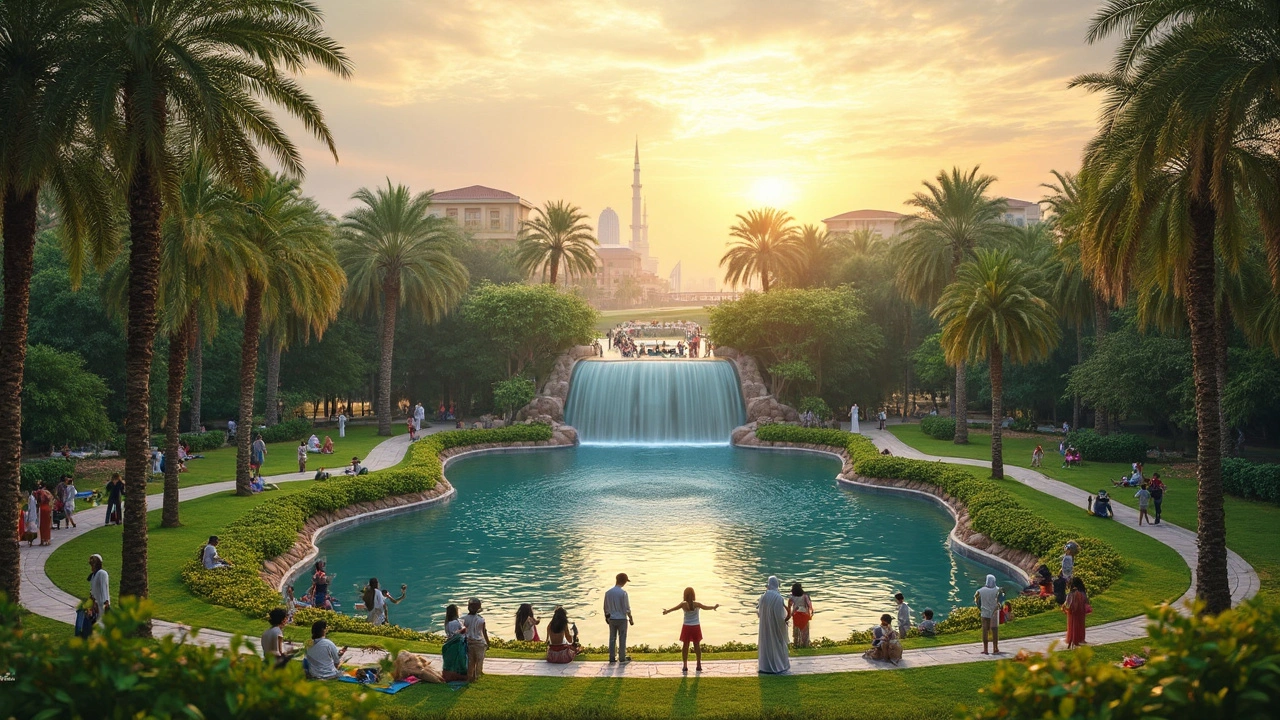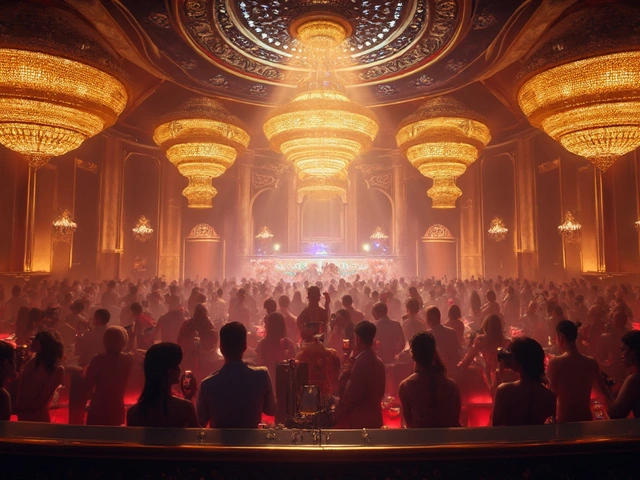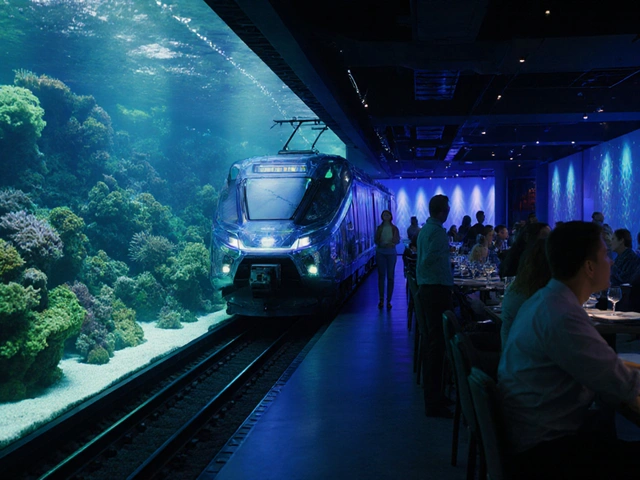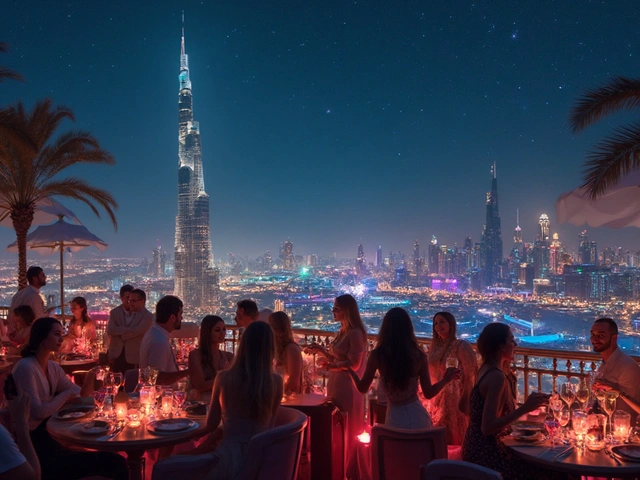Hunting for the perfect weekend escape? Parks with waterfalls and lakes are hard to beat—picture yourself stretched out on a blanket next to cool, clear water or hiking alongside a misty cascade. You don't need to travel across the world for these views; there are amazing parks out there that deliver nature’s ‘wow’ factor right in your own backyard.
If you’ve ever tried planning a trip and wondered, “Will there actually be water flowing this time of year?” or “Is this lake good for swimming?”—you’re not alone. I’ll break down practical tips on the best times to visit, how to beat the crowds, and what to bring so you can skip the rookie mistakes. From famous national parks to low-key local favorites, you’ll find real info on what to expect (and what you shouldn’t miss!).
- Top Takeaways
- Quick List: Where to Find Waterfalls and Lakes
- Why These Parks Are Worth a Trip
- Planning Your Visit for the Best Experience
- FAQ: Waterfall and Lake Park Visits Explained
Top Takeaways
If you want a quick rundown before you start planning, here are some key things you should know about visiting the best parks with amazing waterfalls and lakes. These tips can save you time, help you avoid crowds, and make your outdoor trip way better.
- The U.S. is loaded with parks that feature big waterfalls and lakes. Spots like Yosemite, Yellowstone, and Cuyahoga Valley National Park are famous for their water views, but some local state parks have zero crowds and stunning lakes too.
- Some parks—think Great Smoky Mountains or Watkins Glen—offer easy trails for beginner hikers as well as tougher routes. There’s usually something for every fitness level, so don’t sweat it if you hate steep climbs.
- Visiting in early summer or right after strong rainfall pumps up the waterfall action. By late summer, some falls slow to a trickle, so check conditions before you go.
- Lakes inside parks can mean a lot more than just pretty photos. Many allow swimming, canoeing, or even fishing. Make sure to check the specific park rules—some don’t allow water activities for safety or environmental reasons.
- If you hate crowds, visit on a weekday morning. Most Instagram shots from parks happen on weekends, and it shows in parking and on the trails. Early birds get quiet trails and better photo ops.
| Park Name | Main Attraction | Best Season |
|---|---|---|
| Yosemite National Park | Yosemite Falls & Mirror Lake | April-June |
| Watkins Glen State Park | 19 Waterfalls along Gorge Trail | Late Spring-Summer |
| Hocking Hills | Cedar Falls & Rose Lake | Spring-Fall |
| Great Smoky Mountains | Abrams Falls & Fontana Lake | Late Spring-Early Summer |
Don’t just wing your trip. Download trail maps ahead of time and pack water shoes if you plan on wading in (trust me, slippery rocks are everywhere). If you want to fish or kayak, see if you need a permit. And bring a power bank for your phone—you’ll take way more pictures than you think.
Quick List: Where to Find Waterfalls and Lakes
There’s no need to spend hours scrolling when you’re searching for the best parks with waterfalls or lakes. Here’s a solid list of parks across the U.S. where you can count on impressive water views and easy access. Whether you want big, famous falls or lakes perfect for swimming and picnics, here’s a starting point:
- Yosemite National Park (California): Home to giant waterfalls like Yosemite Falls and Bridalveil Fall. The park’s lakes, like Tenaya Lake, are great picnic spots in summer.
- Niagara Falls State Park (New York): You can’t talk about waterfalls without mentioning Niagara. The surrounding park area has easy paved paths, river views, and picnic areas for families.
- Glacier National Park (Montana): Loaded with pristine blue lakes—check out Lake McDonald for calm paddling or Grinnell Lake for a scenic hike. There are also smaller falls and streams almost everywhere.
- Shenandoah National Park (Virginia): If you’re near the east coast, this park has over a dozen named waterfalls, like Dark Hollow Falls, and plenty of easy-to-reach lakes.
- Silver Falls State Park (Oregon): Nicknamed the “crown jewel” of the Oregon State Parks system, you get a famous hiking route (the Trail of Ten Falls) and lots of waterfalls within a few miles.
- Acadia National Park (Maine): Jordan Pond is a favorite for calm views, and there are hidden waterfalls like Cadillac Falls if you veer off the main roads.
- Hocking Hills State Park (Ohio): Tucked away in the Midwest, this one gets you Ash Cave Falls and Cedar Falls, plus quiet lakes that hardly ever get crowded.
- Letchworth State Park (New York): Sometimes called the “Grand Canyon of the East,” it’s famous for huge waterfalls along the Genesee River, plus a few lakes you can actually kayak on.
Forget wondering whether these spots actually deliver—these parks are known specifically for their waterfalls and lakes. If you want a quick visual, check out the table below for highlights on each destination.
| Park Name | State | Main Features | Best Season |
|---|---|---|---|
| Yosemite National Park | California | Yosemite Falls, Tenaya Lake | Spring for falls, Summer for lakes |
| Niagara Falls State Park | New York | Niagara Falls, walking paths | Late Spring to Early Fall |
| Glacier National Park | Montana | Lake McDonald, Grinnell Lake | Summer |
| Shenandoah National Park | Virginia | Dark Hollow Falls, multiple lakes | Spring to Early Fall |
| Silver Falls State Park | Oregon | Trail of Ten Falls | Year-round, best in Spring |
| Acadia National Park | Maine | Jordan Pond, Cadillac Falls | Late Spring to Early Fall |
| Hocking Hills State Park | Ohio | Ash Cave Falls, quiet lakes | Spring to Fall |
| Letchworth State Park | New York | Genesee River falls, kayaking | Late Spring to Early Fall |
If you’re looking for something less crowded, check local state parks—they sometimes have small lakes with surprise waterfalls, and it’s way easier to grab a parking spot on a busy weekend.
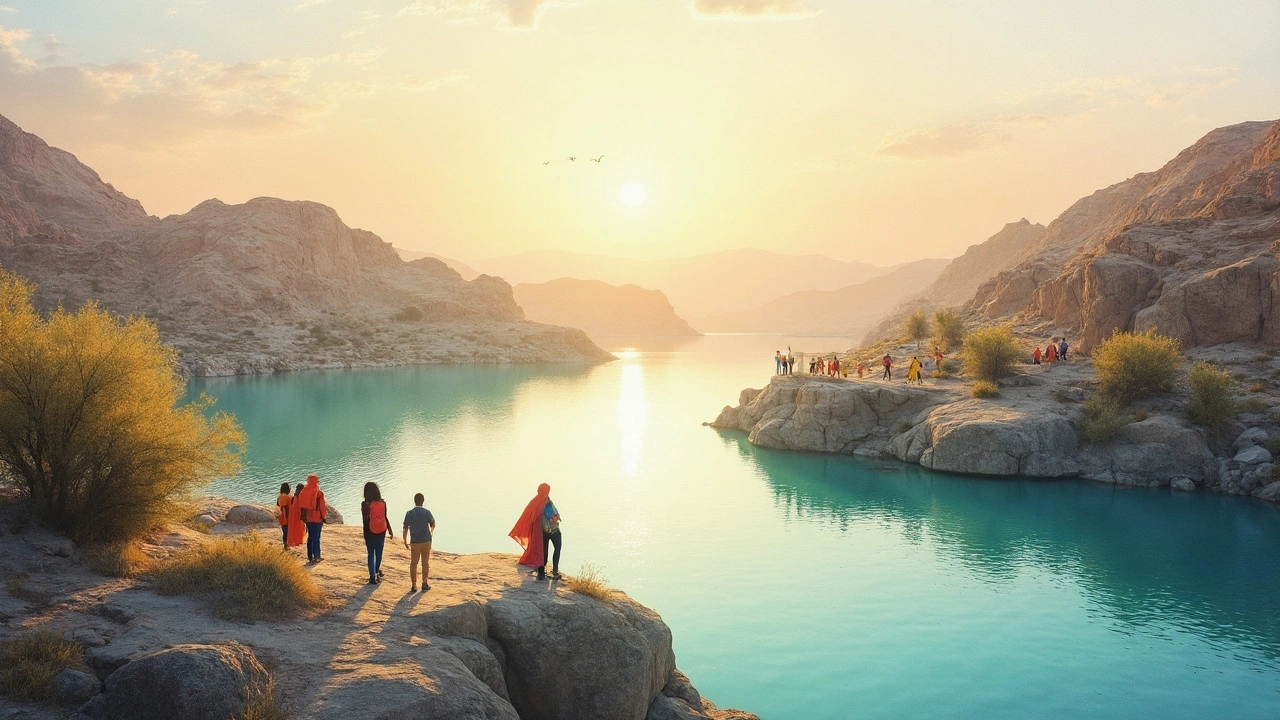
Why These Parks Are Worth a Trip
When you’re picking a spot to relax or stretch your legs, nothing quite beats the vibe at a park packed with lakes and waterfalls. Here’s what makes them extra special.
First, waterfalls aren’t just pretty—they actually make you feel better. Moving water increases negative ions in the air, and studies show that can boost your mood and energy. Parks like Yosemite in California and Plitvice Lakes in Croatia see millions of visitors each year mainly for this reason: people love the natural energy and scenery around the falls.
Lakes also have their own charm. They’re perfect for families, solo adventurers, or anyone who just wants to chill on a hot day. At Lake Louise in Canada, the water is ridiculously blue because of rock flour—tiny particles from glacier erosion. And in the States, Hanging Lake in Colorado gives you Insta-worthy emerald water and a boardwalk you can walk right across. You get swimming, kayaking, and photo-ops all in one spot.
- If you like wildlife, parks with big lakes and strong rivers usually have more to see—think otters, birds, or maybe even a moose if you’re lucky.
- Waterfall parks almost always have cooler temperatures, even in the summer, so they’re a smart pick for sweaty days.
- Many well-known parks have paved paths and solid signage, so you’re less likely to get lost.
Let’s look at some park fun facts to put things in perspective:
| Park Name | Main Feature | Annual Visitors (2023) |
|---|---|---|
| Yosemite (USA) | Yosemite Falls, numerous lakes | 3.5 million |
| Plitvice Lakes (Croatia) | 16 lakes, 90+ waterfalls | 1.7 million |
| Banff National Park (Canada) | Lake Louise, Moraine Lake | 4.1 million |
| Iguazu National Park (Argentina/Brazil) | Iguazu Falls | 1.5 million |
The bottom line: if you hit a park with waterfalls or lakes, you’re in for better views, more activities, and a real sense of escape from day-to-day stress. You get way more than just a nice background for a picnic—you get the whole package: fun, relaxation, and fresh things to see every time you visit.
Planning Your Visit for the Best Experience
If you want the best out of a trip to parks with jaw-dropping waterfalls and gorgeous lakes, timing and prep matter. Waterfalls can be seasonal—some only roar during spring melt or after heavy rain. Lakes don’t care about the weather as much, but swimming’s only fun when it’s warm. So, do a little homework before you go.
- Best Time to Go: Late spring is usually prime for waterfalls. You’ll catch them at full force thanks to snowmelt. For lakes, late spring through early fall offers the best temps for picnicking, paddling, or swimming.
- Park Hours and Regulations: Double-check the park’s website before you leave. Some places, like Yosemite, have timed entry systems. Others gate their lots at sunset. It pays to know what’s open and what’s off-limits so you don’t end up disappointed at the entrance.
- Preparation: Some parks are super remote, so you need snacks, water, and sunblock. Bring a map; your phone’s GPS can be spotty out there. For big-name spots, reserve your campground or parking ahead—places like Havasu Falls in Arizona use a lottery system for permits, and they’re snapped up fast.
- What to Bring: Waterproof shoes for rocky trails and wet spots, bug spray (especially in summer by lakes), a trash bag to pack out your stuff, and maybe hiking poles if the paths are steep. Don’t forget a change of clothes—chasing waterfalls can get splashy.
Here’s a real example: At Oregon’s Silver Falls State Park, the 7-mile Trail of Ten Falls lets you walk behind waterfalls and wander beside deep pools. But if you wait until August, some falls shrink to a trickle. Meanwhile, at California’s Lake Tahoe parks, summer means packed beaches and fast-booking paddleboard rentals, so getting there early is key.
| Park Name | Best Month for Waterfalls | Best Month for Lakes | Notes |
|---|---|---|---|
| Yosemite National Park | May | June-September | Reserve early; waterfalls peak in spring |
| White Mountains, NH | June | July-August | Bugs peak in early summer |
| Plitvice Lakes, Croatia | April-May | June | Stunning views, but crowded in summer |
If you’re planning a visit, look at the weather, the crowds, and what kind of outdoor activities you actually want. Want to swim? Make sure the lake isn’t glacier-cold. Love big flows? Spring is your friend, even if it means muddy trails. However you roll, a little extra planning makes a huge difference.
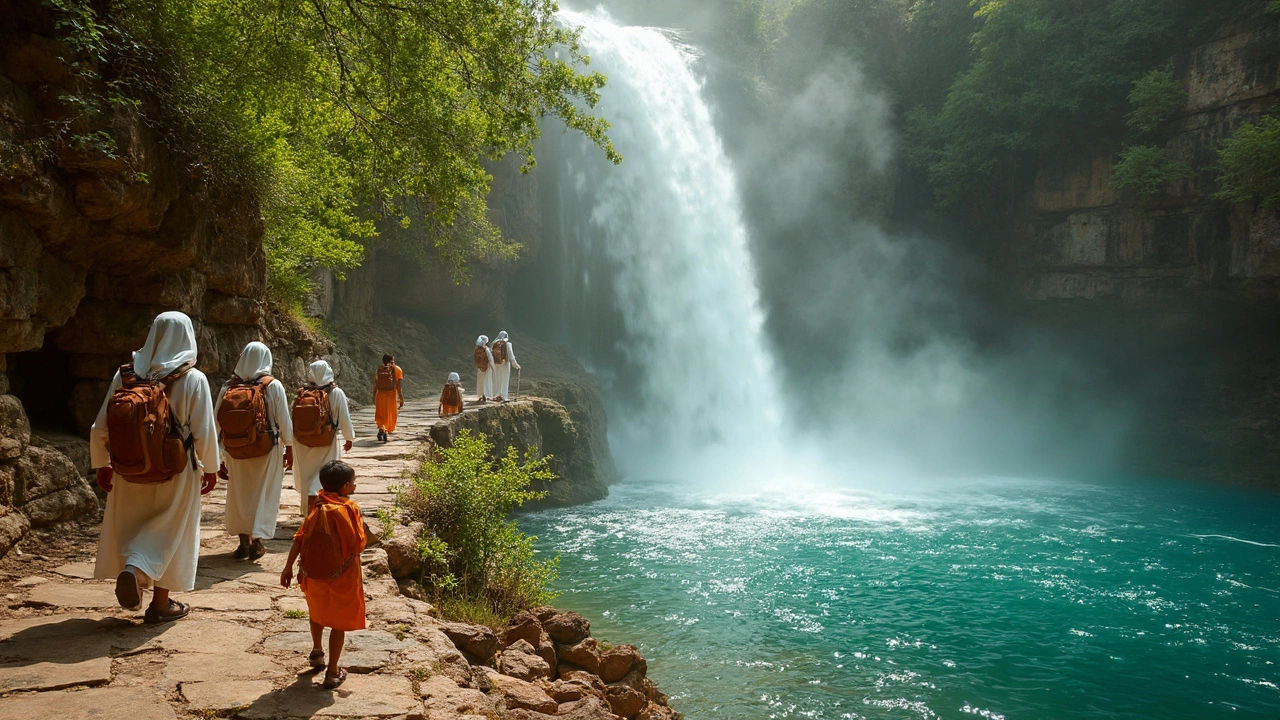
FAQ: Waterfall and Lake Park Visits Explained
Got questions about visiting parks with stunning waterfalls and sparkling lakes? You’re not the only one! Here are answers to what folks ask the most, so you can plan with zero stress and max fun.
When is the best time to visit parks for waterfalls and lakes?
Spring and early summer usually give you the strongest waterfall flows thanks to melting snow and rainfall. For lakes, late spring through early fall works well—it’s warm enough for swimming or paddleboarding, and most amenities are open. Too hot? Go in the early morning or later afternoon.
Are these parks kid-friendly?
Most of the best parks are great for families, with short, flat trails near waterfalls and plenty of spots to set up a picnic by the lake. Just double-check the difficulty of specific trails and always keep an eye on little ones near water.
Can you swim in waterfall pools or lakes?
Sometimes, but not everywhere. Always look for signs—some lakes are famous for swimming (like Crater Lake in Oregon or Lake Louise in Banff), while some waterfall pools might have strong currents or be off-limits for safety.
“Before you jump in, check with the park staff or visitor centers—some lakes and waterfalls look inviting but swimming isn’t allowed everywhere for safety or environmental reasons,” says the National Park Service.
What should I pack for a trip to a waterfall or lake park?
- Plenty of water and snacks
- Non-slip shoes or hiking sandals
- Swimsuit (if it’s allowed and you’re tempted to take a dip)
- Towel and change of clothes
- Sunblock, bug spray, hat, and sunglasses
- Trash bags for your garbage (help keep parks clean!)
- Camera or smartphone for the ‘wow’ moments
Are the waterfall and lake trails crowded?
Popular parks can get busy on weekends and holidays. Try for weekdays or early mornings to snag quieter views. Hidden gems usually have fewer crowds, but may take a little more research to find.
Do you need to pay to get in?
| Park Type | Entry Fee |
|---|---|
| National Parks | $10–$35/vehicle |
| State Parks | $5–$15/vehicle |
| City Parks | Usually free |
Many parks take credit cards or payments online, but if you’re headed somewhere remote, bring cash just in case. Park passes might save money if you plan more than one trip.
Is it safe for solo visitors?
Yes, as long as you stick to marked trails, let someone know your plans, and pack essentials. Many solo travelers visit these nature parks with no issues. If you’re nervous, join a group hike or ranger-led walk.
Still have questions? Most park websites have up-to-date details on trail status, water levels, and rules. If you’re looking for more info, check out recent park reviews or social media updates from real visitors. You’ll often get the inside scoop on current conditions and tips you won’t find anywhere else.

